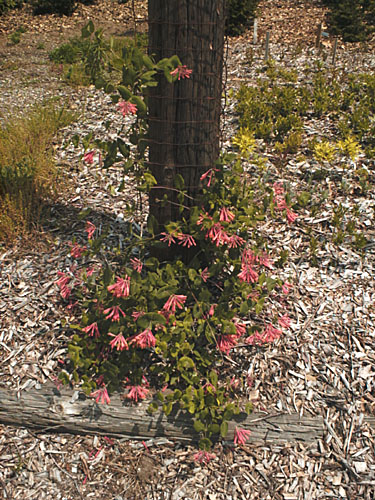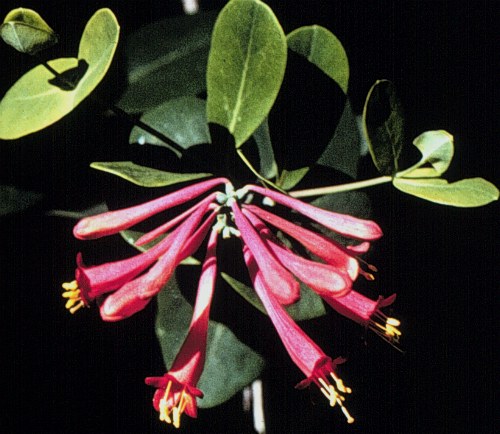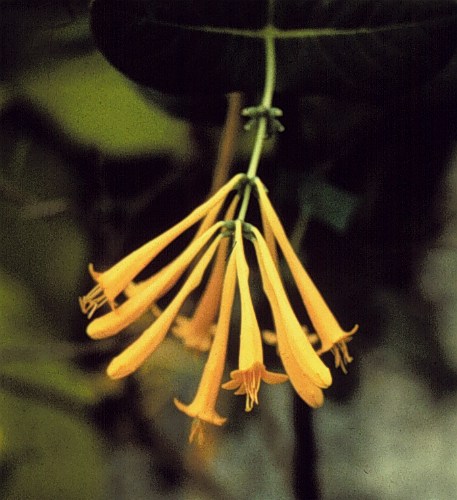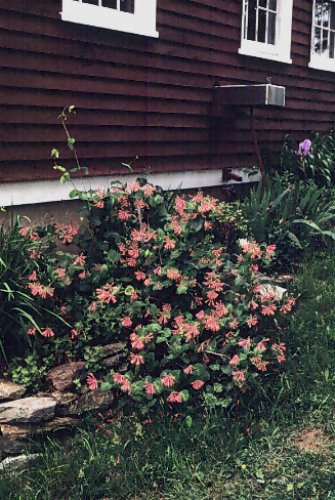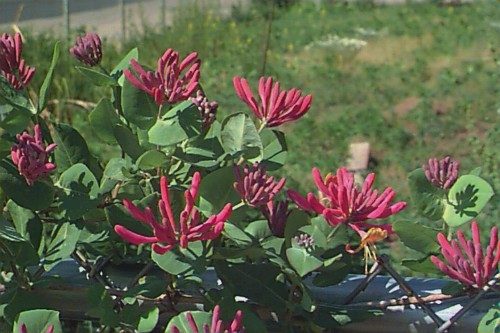Lonicera sempervirens
Trumpet Honeysuckle, Coral Honeysuckle
Caprifoliaceae
ExpandHabitat
- native to Connecticut down through Florida and across to Texas
- hardy to zone 4, warmer parts of 3
Habit and Form
- a deciduous twining vine
- somewhat vigorous
- 10' to 20', depending on structure
- medium texture
- fast growth rate
Summer Foliage
- opposite, simple leaves
- simple, deciduous leaves
- ovate leaf shape
- 1" to 3" long
- glaucous underside
- first two leaf pairs below flower are connected
- leafs out early
- blue-green leaf color
- new growth reddish purple
Autumn Foliage
- no fall color
- leaves drop green
Flowers
- perfect flowers
- flower is orangy-red on the outside and yellow on the inside
- tubular
- up to 2" long
- flowers clustered on whorled spikes
- blooms in spring and sporadic through season
Fruit
- deep, red berries
- 0.25" in diameter
- matures in September
Bark
- twining, thin stems
- tan colored
- glabrous
Culture
- easy to grow
- easily transplanted
- prefers well-drained, neutral soil
- full sun to shade
- needs support
- prune after flowering
Landscape Use
- quick covering vine
- bank cover
- fence cover
- arbor
- for flowering effect
- attracts hummingbirds
Liabilities
- powdery mildew
- leaf spot
ID Features
- first two leaf pairs are connected under flowers
- twining vine
- dual colored flowers
- flowers are not fragrant
- opposite leaf arrangement
- small red fruit
- no fall color
Propagation
- by cuttings
- by seed
Cultivars/Varieties
'Alabama Crimson' - A cultivar that is becoming very common in commerce, this plant sports bright red blooms that are produced sporadically throughout the season.
'Blanche Sandman' - This form has orange-red blooms that are produced even after the initial flush. It is resistant to leaf diseases.
'Cedar Lane' - A deep red-flowering form, this plant produces abundant bloom. It is less prone to leaf diseases.
'John Clayton' - Becoming more popular in the trade, this selection bears clear yellow blooms that repeat throughout the season.
'Magnifica' (perhaps f. magnifica, may be the same as 'Superba') - A cultivar of questionable identity and existence, this plant features bright red blooms that will repeat with good culture.
'Sulphurea' (also known as 'Flava') - This form features profuse bright yellow blooms and bright green foliage.
